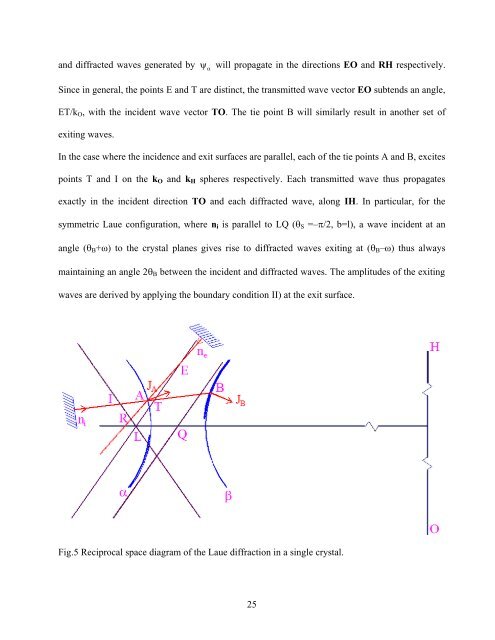PHYS01200804001 Sohrab Abbas - Homi Bhabha National Institute
PHYS01200804001 Sohrab Abbas - Homi Bhabha National Institute
PHYS01200804001 Sohrab Abbas - Homi Bhabha National Institute
Create successful ePaper yourself
Turn your PDF publications into a flip-book with our unique Google optimized e-Paper software.
and diffracted waves generated by<br />
<br />
will propagate in the directions EO and RH respectively.<br />
Since in general, the points E and T are distinct, the transmitted wave vector EO subtends an angle,<br />
ET/k O , with the incident wave vector TO. The tie point B will similarly result in another set of<br />
exiting waves.<br />
In the case where the incidence and exit surfaces are parallel, each of the tie points A and B, excites<br />
points T and I on the k O and k H spheres respectively. Each transmitted wave thus propagates<br />
exactly in the incident direction TO and each diffracted wave, along IH. In particular, for the<br />
symmetric Laue configuration, where n i is parallel to LQ ( S =–/2, b=l), a wave incident at an<br />
angle ( B +ω) to the crystal planes gives rise to diffracted waves exiting at ( B –ω) thus always<br />
maintaining an angle 2 B between the incident and diffracted waves. The amplitudes of the exiting<br />
waves are derived by applying the boundary condition II) at the exit surface.<br />
Fig.5 Reciprocal space diagram of the Laue diffraction in a single crystal.<br />
25
















